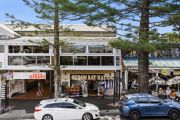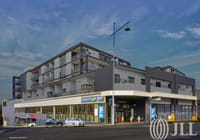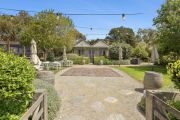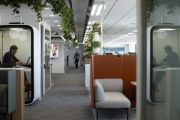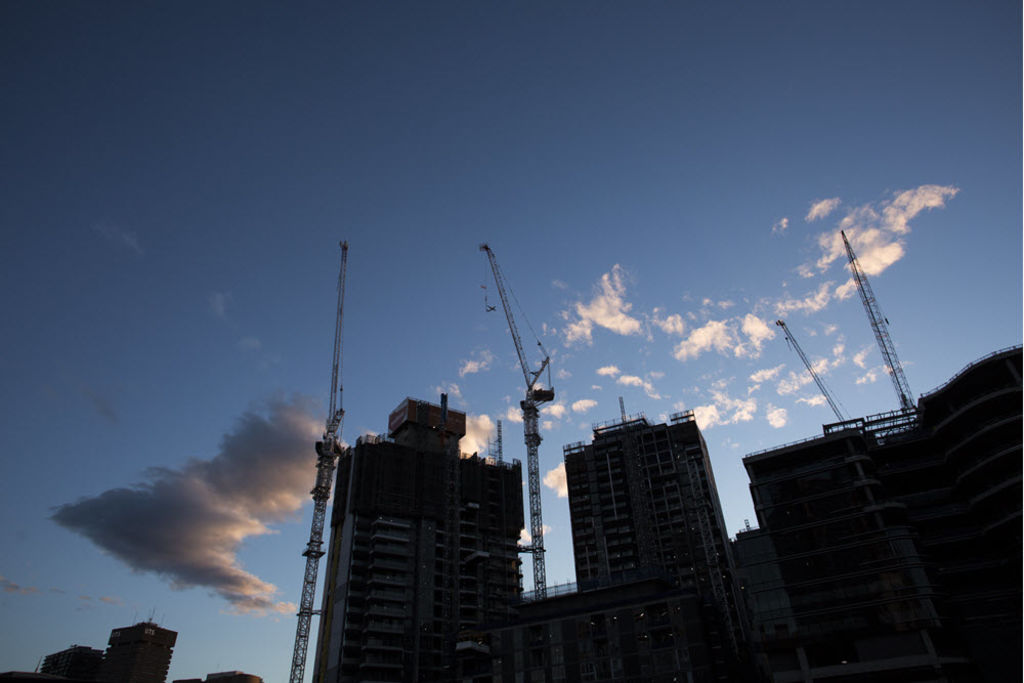
Building approvals for commercial property hit post-GFC high: report
Planned building activity in the commercial property sector has surged to a new post-GFC record, with Sydney leading the way, a new report says.
The value of construction approvals in the prime commercial property sectors of retail, office and industrial hit $5.78 billion nationally over the three months to the end of November.
The longer period – 11 months to the end of November – was up more than 15 per cent on the same period in 2015. Sydney recorded approvals of $4.31 billion, just pipping Melbourne’s $4.05 billion, according to a Domain Group report, based on latest Australian Bureau of Statistics figures released last week.
“The primary or ‘prime supply’ commercial sectors have now recorded building approvals to the value of $15.35 billion over the first 11 months of 2016,” said Domain Group’s chief economist Dr Andrew Wilson. “That’s an increase of 15.4 per cent on the $13.3 billion approved over the same period last year.”
After Sydney and Melbourne, the value of Perth’s approvals hit $1.7 billion, while Brisbane had $1.51 billion and Adelaide $370 million, Dr Wilson said.
Many of the major indicators for the commercial real estate market were buoyant, with $6.93 billion of retail construction approved to the end of November, 10.7 per cent higher than for the same period the previous year. Planned office construction had increased by a very healthy 27.2 per cent to $4.69 billion, while industrial building approvals were up by 11.3 per cent, to $3.74 billion, the report found.
That growth is split unevenly between Sydney and Melbourne.
Sydney was the strongest retail market with $1.95 billion in approvals, compared with Melbourne’s $1.06 billion. But in terms of office and industrial approvals Melbourne overshadowed Sydney – $1.65 billion to $1.57 billion for office space, and $1.32 billion to $776 million for industrial, the report found.
Despite this, industry experts aren’t as upbeat about the future of non-residential construction in the short term. Hansen Yuncken’s chief executive Peter Salvesen said in December that there wasn’t a lot of growth in the non-residential sector.
The Australian Construction Industry Forum also said the short-term outlook for non-residential construction had weakened.
The fact that the Sydney office market figures were being dwarfed by those of Melbourne were probably more a result of offices being elbowed out of the way of the booming residential market, said Colliers International national director of office leasing Cameron Williams. A lot of space earmarked for offices has been taken up instead by new apartments.
“That’s probably one of the key drivers to it all,” he says. “It’s also harder to amalgamate space in the Sydney CBD relative to Melbourne, and Sydney is slower to respond to changes in market dynamics.
“Sydney is doing well in terms of offices but not so well on the supply. It’s easier in metropolitan parks like Macquarie Park, North Ryde and Homebush, but not in the Sydney CBD and North Sydney CBD.
”Melbourne, by contrast, doesn’t have the same geographical strength and it has a much lower price point. To lease office space in the Sydney CBD will cost an average of $1000 per square metres, which is 30-40 per cent higher than in Melbourne.”
At the same time, Melbourne’s retail market, being beaten by Sydney’s, is unlikely to stay that way for long, said Zelman Ainsworth, head of Victorian retail leasing at agents CBRE.
At the moment, many major retailers were reporting similar, and in some cases better, trade in Melbourne than in Sydney, he said.
Retail rents were at record levels, and incentive levels – where landlords in previous years have offered rent-free weeks or a capital contribution to lure tenants – were showing no rise at all.
“We are also seeing retailers going back into strip retail markets because of the ‘lifestyle experience’ they offer,” Mr Ainsworth said.
“With apartment-living becoming more prevalent in Melbourne now, strip markets all across Melbourne are coming back to life, especially as the population levels and tourism continue to increase.”
In the report, Perth fared strongly on retail space, in third place with $936 million of building approvals, and boasting $1.69 billion of total prime supply, while Brisbane did better in terms of office and industrial space, and coming fourth in the country overall.


